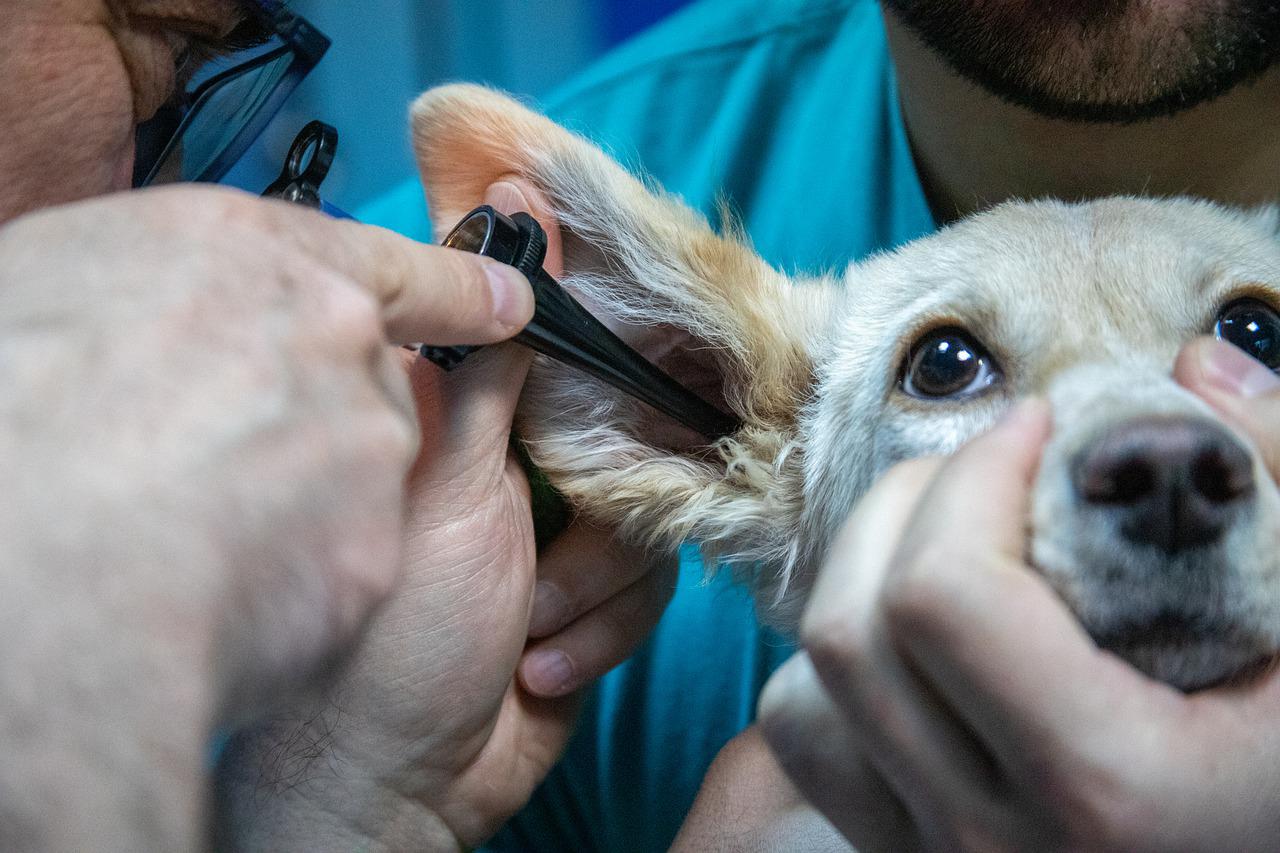
Why Do Dogs Get Ear Infections?
Did you know that roughly 20 percent of dogs have some type of ear disease, according to the American Kennel Club? Dogs can sometimes be prone to ear infections because of the shape of their ear canals. A dog’s ear canal forms an “L” shape, which tends to hold in fluid. This can result in bacteria or yeast, which causes ear infections. If you have a puppy, they may also get ear infections due to ear mites.
Types of Ear Infections in Dogs
There are three main types of ear infections in dogs, including:
Otitis externa: The most common type, otitis externa is an outer ear infection. It happens when there is inflammation in the outer ear canal.
Otitis media: This is defined as inflammation in the middle ear (inside the ear drum, also known as the tympanic membrane). It can result in damage to the tympanic membrane and bulla.
- Otitis interna: Finally, otitis interna is inflammation of the inner ear. It’s often caused by a bacterial infection. Dog breeds with long ears, such as Spaniel or hound breeds, are often more susceptible to chronic ear infections. This can eventually lead to otitis interna.
When a dog has an external ear infection, it can often spread to the middle and inner ear. If left untreated, severe inner ear infections can cause diminished coordination and balance — and even deafness in the impacted ear. That’s why it’s so important to spot the signs of a dog ear infection early and seek treatment from a veterinarian.
Signs Your Dog May Have an Ear Infection
Ear infections can cause your dog to feel uncomfortable doing daily tasks they once enjoyed, such as playing, eating or even receiving head pats. Early on, you might notice your dog pawing or “rubbing” their ears. They may also vigorously shake their head or tilt it to the infected side. On the underside of the ear, you may notice redness or swelling. If the ear infection worsens, discharge or crust may be visible and it may produce a foul smell.
Here’s a quick recap of some of the key signs your dog may have an ear infection:
Scratching or pawing at ears
Vigorous head shaking
Head tilting
Shies away from being pet on the head
Thick or red on the underside of the ear
Discharge or crusty build-up
Foul smell coming from your dog’s ears
If you notice any of these signs, it’s important to call your veterinarian immediately and make the next available appointment.
How to Treat an Ear Infection in Dogs
Dog ear infections rarely just go away on their own. Delaying treatment can cause an outer ear infection to become a more severe inner ear infection. Additionally, trying to fix the problem with over-the-counter medications can sometimes backfire. If you don’t know what’s causing the ear infection, it’s impossible to find the right medication to treat it. If you over apply or incorrectly apply store-bought medicine, it can also be dangerous.
As such, it’s best to make an appointment with your veterinarian. They will conduct a thorough examination to determine what type of ear infection your dog has, how to treat it and how to prevent it from happening again in the future. They’ll also thoroughly clean your dog’s ears and use a medicated ear cleanser.
Depending on the type and severity of your dog’s ear infection, your veterinarian may prescribe an antibiotic ointment and ear drops for you to continue to apply for a specified period of time at home. Severe cases may require an oral antibiotic and anti-inflammatory medication.
Applying Veterinarian-Prescribed Medication at Home
Many ear medications come in a squeeze bottle, which means you have to count the drops. Sometimes, it’s an ointment where you can’t always see how much is going into the ear. Meanwhile, your dog is hardly sitting still while you apply it, which can make it that much more difficult to get the proper amount in the right place.
Here are some quick tips fellow veterinarians shared with Veterinary Practice News:
Use one of your hands to hold the ear up and rest it on your dog’s head. Avoid putting the tip all the way in, as it makes it difficult to see how much you’re applying. Instead, aim for the ear canal and watch closely to count the drops as they leave the bottle.
After you apply the drops, gently massage the base of the ear to help the medication find its way to the bottom of the ear canal.
Follow the dosing frequency, quantity and directions precisely to ensure the medication works effectively.
Most importantly, make sure to schedule a follow-up appointment with your veterinarian. This helps to ensure that the ear infection is healing and that your dog can go back to being their happy-go-lucky self again.




